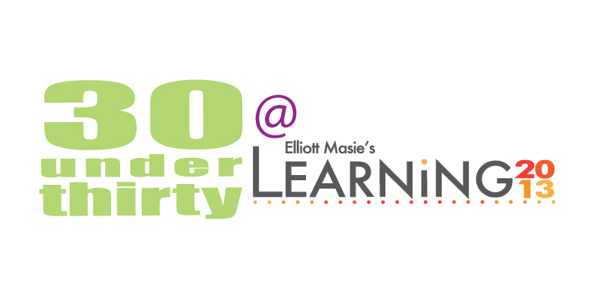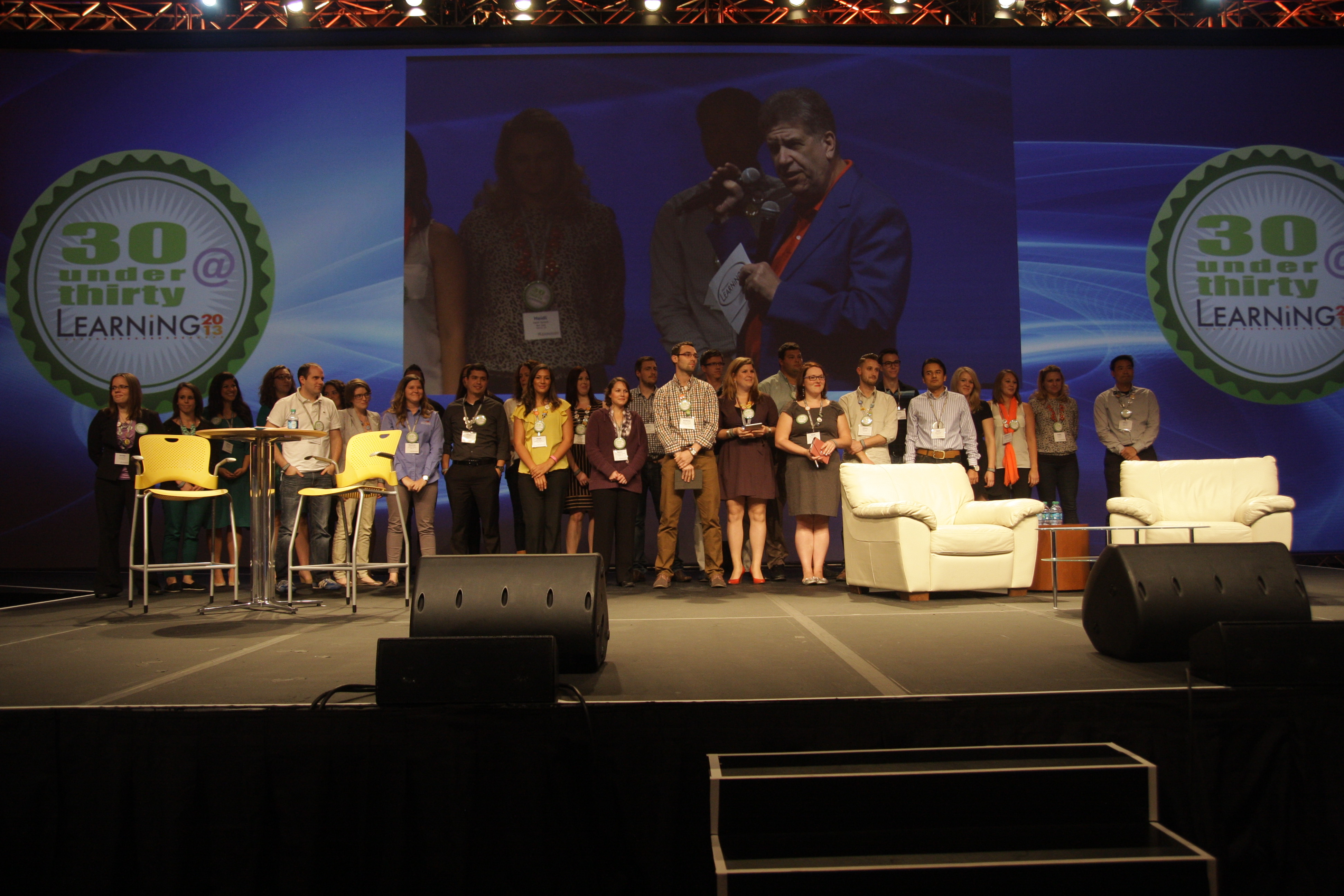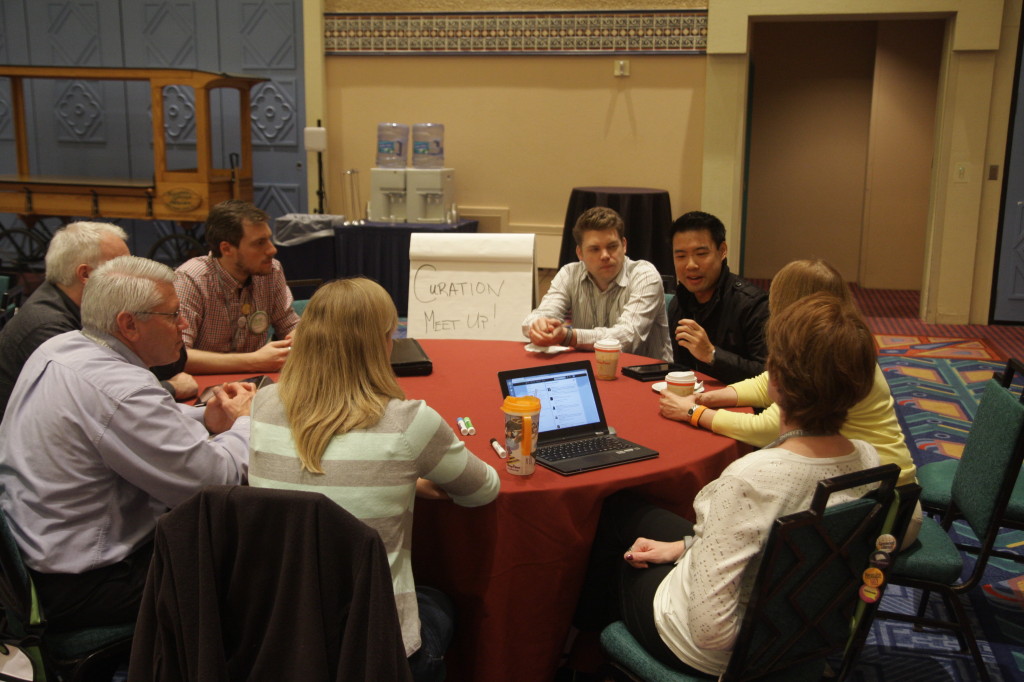
Articles
What do the next generation think about mobile learning? Insights from Learning 2013
by WorkLearnMobile

Khoa Lam, one of our Mobile Learning team, was picked by Elliott Masie as one of his “30 under 30” future learning leaders. We sent him to Learning 2013 to meet the other 29, to mingle with some older learning leaders, and to report back on some of the prevailing corporate learning themes in e-learning.
He suggests that mobile, curation and contextual learning should be at the forefront of learning strategy, if blended right. Here are some of his thoughts and top tips from the event …
Learning 2013 is structured to facilitate conversation, more so than most conferences I’ve attended. You can join impromptu discussions, participate in speed/reverse mentoring sessions, and get to know keynoters such as Hillary Clinton and George Takei on a more personal level thanks to Elliott’s interview style format. In my conversations throughout the event, the three most common topics that came up were:
1. Mobile
Several sessions on Mobile learning offered an insight on the on-going changes to the way content is designed and distributed through mobile devices. As Elliott Masie rightly pointed out in his key note, it is all about delivering more compressed chunks of learning content, which is quite possible through mobile medium.
However, Mobile isn’t the answer and is not the silver bullet that will solve all your organisation’s learning challenges.
Mobile is just another delivery platform in our vast toolkit of solutions, but a very powerful ally when it comes to curation and contextual learning.
#INFO BYTE: I stumbled upon the Twitter Insight Report for the event, and naturally searched for “mobile” in the list of most popular topics. Turns out, it didn’t even crack the Top 25. I’m a bit surprised, but this may be a good thing and questions the interest levels of the uptake of mobile learning.
2. Curation
Curation has been all the rage lately and I have noticed we are gradually moving towards content curation and facilitation with a shrinking emphasis on instructional design. As the tools to create/share content evolve and become more readily available, we must work on better ways to leverage that content. By now, people are used to fast/easy tools such as YouTube/Twitter in the public space, and organizations need to keep up for the sake of their employees.
To adapt in this new generation, the focus moves from creating the content ourselves, to enabling experts to create higher quality material, and providing a platform to package/consume it.
#INFO BYTE: To this end, two mobile-friendly services that I’ve been keeping an eye on in this space are the appropriately named Curatr (brought to you by fellow 30 Under 30 alumni Ben Betts and James Mullaney), and the up-and-coming Pathgather. Speaking of curation, if you’re looking for a nice list of resources from the event, check out David Kelly’s backchannel.
3. Contextual Learning
Several enthusiastic conversations were on about AR and Contextual learning, which seemed like a logical extension to mobile. All the required pieces are falling into place – smartphones are abundant (outselling PCs and now basic feature phones), Wi-Fi is everywhere, and location-aware technologies are improving. We all know and love just-in-time learning, so…
..adding a contextual layer that helps you pinpoint related information depending on where you are or what you’re looking at just brings learning to a whole new level.
#INFO BYTE: Two such Qualcomm technologies are Gimbal and Vuforia. Gimbal provides a framework for geofencing and proximity-related actions, and Vuforia is a platform for developers to create Augmented Reality experiences. Our team has been experimenting with the technology in our own mobile learning apps and you can read about one such experiment in Geoff Stead’s article about our Qualcomm Museum Tour project.
To sum it up, I think we’ve only seen the tip of the iceberg for mobile driven contextual learning, and there is more to unravel to support the goals of workplace learning. What is your organization’s approach to implementing Mobile Augmented Reality? Leave a comment, if you have known any cool examples of AR like http://www.adlnet.gov/augmented-reality-ar-and-mobile-learning.
Few Glimpses from the event:

